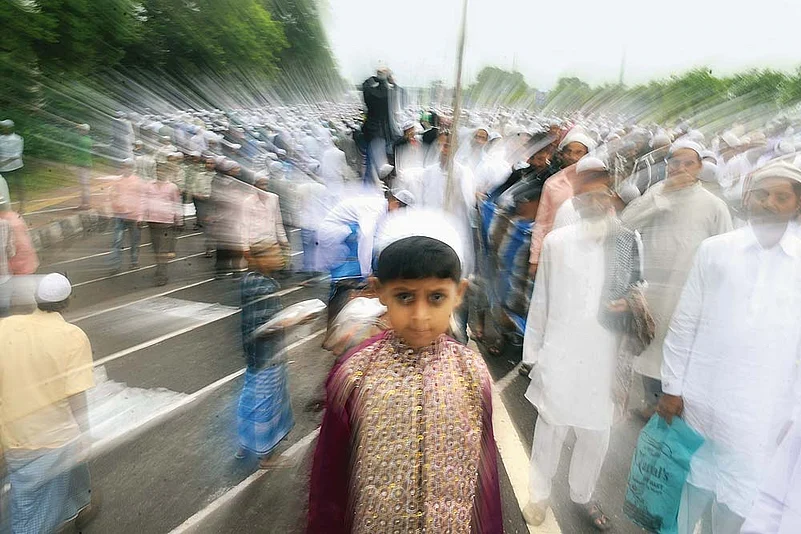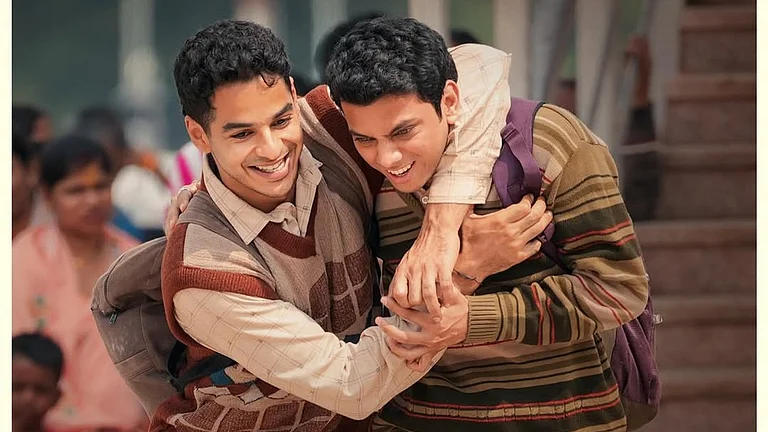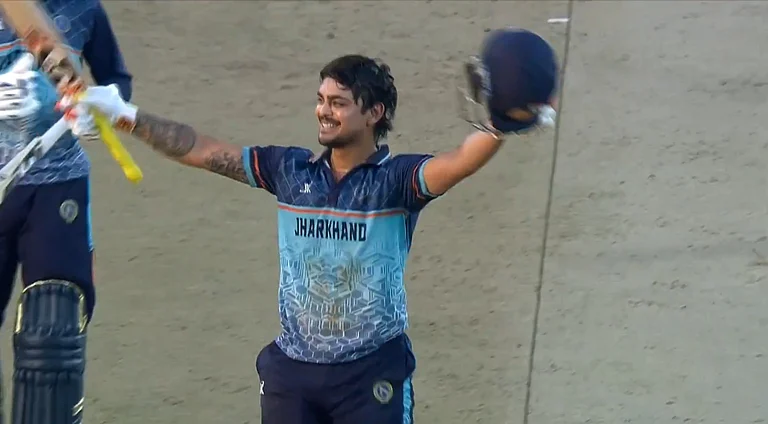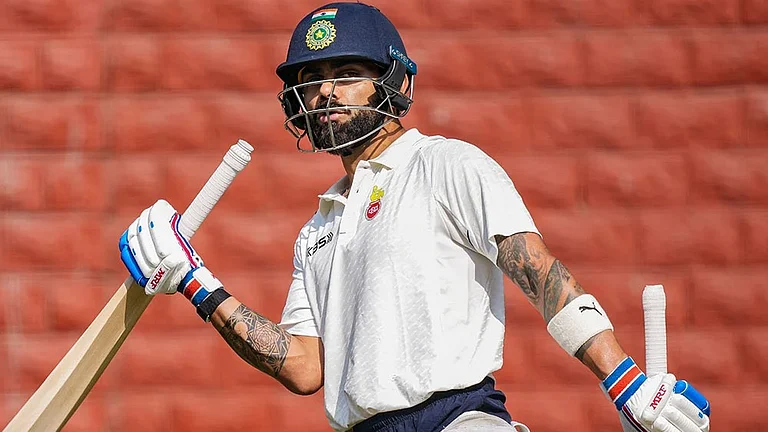The Census 2011 data on religion has unleashed the fury amongst media and public affairs commentators over its interpretation. As the public debate rages ferociously, but inconclusively, over whether India will eventually become an Islamic republic, the only solace is Mark Twain’s quip: ‘Lies, damned lies and statistics’. Amidst such pointless hand-wringing, perhaps a more relevant exercise is the impact of religion on voting patterns, if any. There are various conjectures and beliefs on how voters of different faiths vote in India. There is one theory of a tempestuous relationship between BJP and Muslim voters. That the BJP tends to perform poorly in districts with greater Muslim population is a well-entrenched idea. As per the latest census figures, Muslims make up 14.2 per cent of the overall population of India, spread across 640 districts. Of these, there are 100 districts where Muslims comprise over 20 per cent of the population. How does the BJP fare in these stronger Muslim districts vis-a-vis the rest? This analysis shows that the voting equation between the BJP and districts with a significant Muslim population is far more nuanced and complex than a simplistic negative correlation between the two.
The census provides demographic and religious information as per geographical districts. This does not easily correspond to the Election Commission’s electoral constituencies that capture voting patterns. So, in order to be able to glean some insight into demographic- and identity-based voting patterns, we painstakingly built a data bridge to connect districts used for the purpose of the census and assembly constituencies, which then make it possible to analyse hundreds of millions of actual voter choices over multiple elections, as opposed to surveys of a few thousands of voters.
We focused on the twelve electorally largest states (Uttar Pradesh, Maharashtra, West Bengal, Bihar, Andhra Pradesh, Tamil Nadu, Madhya Pradesh, Karnataka, Gujarat, Rajasthan, Orissa and Kerala) that account for 81 per cent of all MPs in the Lok Sabha. Of these, Orissa has a very small Muslim population and the BJP doesn’t have a significant standalone presence in Tamil Nadu and erstwhile united Andhra Pradesh. Omitting these three states, we analysed 213 million voter choices over three Lok Sabha elections (2004, 2009 and 2014) across 318 districts in nine states that account for 62 per cent of all Lok Sabha MPs and 73 per cent of all Muslims in the country. This is a fairly substantive representation of actual voter choices to test this relationship. In order to neutralise extraneous factors such as alliances, national sentiment etc, we compare contested voteshares of the BJP (voteshare when there is a candidate on the ballot) across districts within the same state for the same election.
As is widely believed, there is an overall 35-40 per cent negative correlation between the number of Muslims and the BJP’s voteshare in a district across these nine states in the last three Lok Sabha elections. That is, the more Muslims in a district, the lower the voteshare of the BJP. But this hides more than it reveals.

Surprisingly (or perhaps not) the BJP’s voteshare actually increases in districts that have significantly more (1.5 times or more) Muslims than the average in that state. In other words, beyond a certain threshold, higher the percentage of Muslims in a district, the higher the BJP’s voteshare, at least in six out of these nine states. The average BJP voteshare in the last three Lok Sabha elections is 2-5 percentage points higher in these districts vis-a-vis the rest. Not only is the notion that the BJP voteshare is higher in districts with a stronger Muslim presence surprising, at least on the surface, but the magnitude of the difference in voteshare is significant enough to swing elections.
For example, in the 2014 election, the BJP’s contested voteshare in UP was 44 per cent. UP’s overall Muslim population across its 71 districts is 19 per cent. However, in the 12 districts in UP where the Muslim population is significantly higher (greater than 30 per cent), the BJP’s average contested voteshare was 3.5 percentage points higher than in the other districts. Similarly, in Madhya Pradesh, where the Muslim population is 7 per cent across 50 districts, in the four districts with 12-25 per cent Muslim population, the BJP’s average voteshare was 61 per cent, compared to 53 per cent in other districts.
This curious pattern of the BJP’s contested voteshare being higher in districts with higher Muslim population within a state pervades across Karnataka, Madhya Pradesh, Rajasthan, Uttar Pradesh, Maharashtra and Gujarat in the 2014 elections—precisely the states where it won a massive percentage of seats contested.
The accompanying chart shows the difference in contested voteshare (the BJP’s voteshare when it was on the ballot) in districts that had 50 per cent more Muslims than other districts in the same state. There is a striking correlation to the states where the BJP won a large percentage of its seats in the 2014 elections. The BJP’s ability to consolidate and garner a higher voteshare in districts with a higher percentage of Muslims is very evident. This counter-intuitive finding lends further credence to the logic that the non-Muslim voteshare in Muslim districts has gravitated towards the BJP in the 2014 elections. However, this trend is not evident in Kerala, Bihar and West Bengal in the 2014 elections in this analysis. While this trend of the BJP picking up a bigger voteshare in districts with a higher Muslim population is not unique to 2014, it is widening in Karnataka, Uttar Pradesh and Rajasthan over the last three elections. This analysis was tested for other scenarios, such as changing the definition of ‘strong Muslim districts’ from ‘1.5 times more Muslims’ to double or even higher. The results are the same.
In India’s notorious first-past-the-post electoral system, where the winner does not need a majority of votes, consolidating voting blocs and splitting opponents’ votes can be more critical than any issue-based campaign. It remains to be seen if this strategy will serve the BJP well in the upcoming Bihar elections. There has been much talk about the Yadavs and the Kurmis of Bihar and their voting preferences vis-a-vis the Rashtriya Janata Dal, Janata Dal (United) and the BJP. However, while Bihar’s overall Muslim population is 17 per cent, there are seven districts, making up 51 assembly constituencies, with over 20 per cent Muslim population. Specifically, the top four Muslim districts—Kishanganj, Katihar, Araria and Purnea—are home to nearly half of all Muslims of Bihar. These are exactly the four districts that the All India Majlis-e-Ittehadul Muslimeen (AIMIM) will contest, ostensibly to consolidate non-Muslim votes as one bloc, besides splitting Muslim votes too. In the 2014 elections, the BJP’s contested voteshare in these four districts was 5.5 per cent points lower than the average in the other districts. Evidently, the BJP hopes to replicate its successful strategy of capturing a higher voteshare in stronger Muslim districts in Bihar. And that, it hopes, would propel it to victory.
(Praveen Chakravarty is visiting fellow of political economy at the IDFC Institute. With help from Rithika Kumar and Swapnil Bhandari of IDFC.)

























